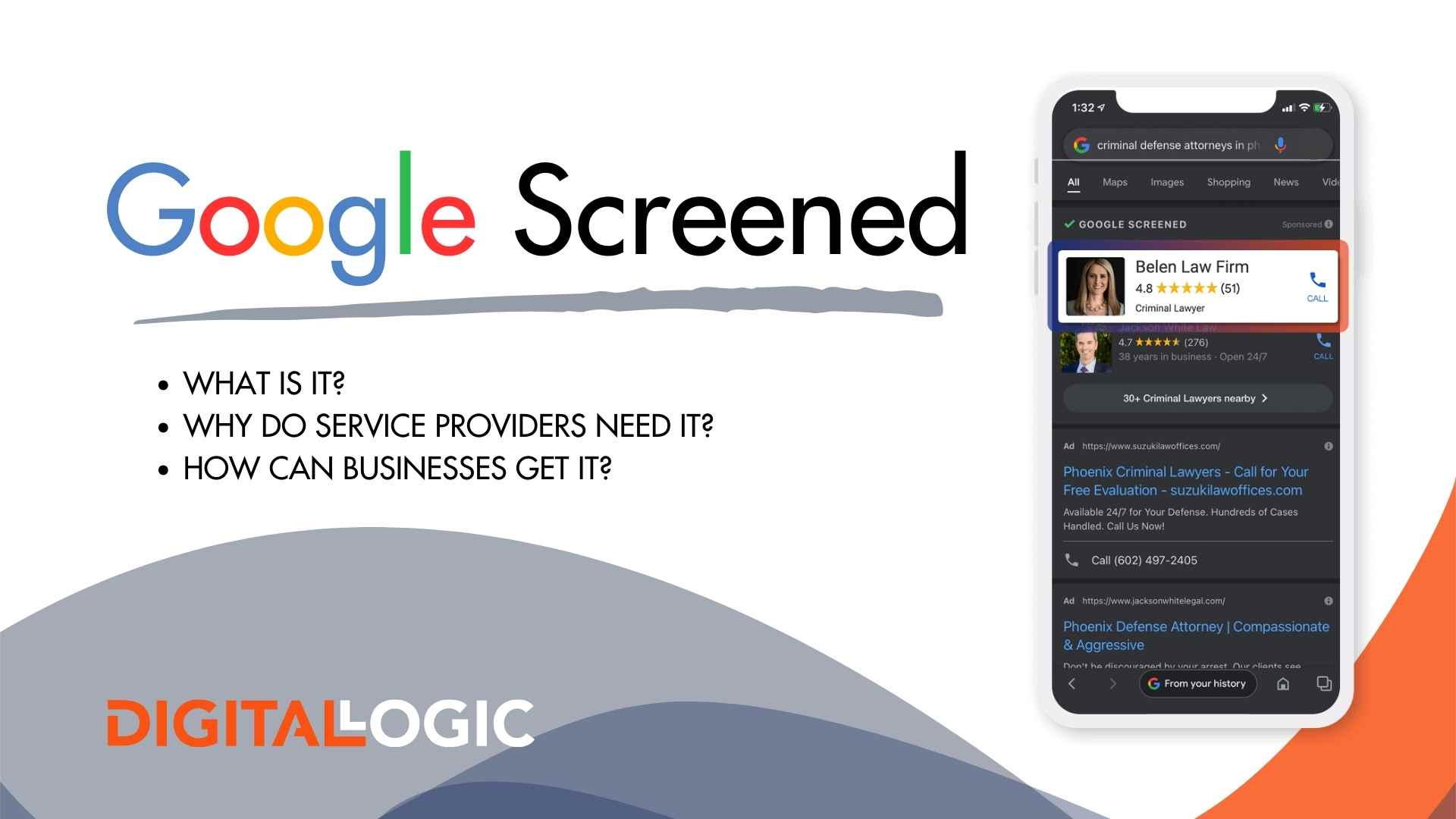Well, television, you had a good run, but is it too soon for business owners to change the channel? We’ll answer this and the resounding question asked by so many small business owners: “How do I get the best return on investment for my marketing efforts?”.
We are now in a multiple-device era. Prime example: when you’re watching tv, and it cuts to a commercial, chances are, you don’t sit there and watch the ad. Instead, you pull out your smartphone, tablet, or laptop. Traditional television ads are stuck in the time warp of the single-device era, and for this reason, may not be the best use of your investment.
In the ever-changing landscape of digital advertising, YouTube has emerged as a powerful platform that offers several advantages over traditional television advertising. YouTube’s platform provides small businesses with a wide audience and precise targeting options. This allows for highly-effective advertising campaigns.
In this post, our digital marketing experts will explore the reasons why YouTube advertising surpasses TV advertising in today’s digital landscape.
Whether you’re a small, local business or a national brand, understanding the benefits of YouTube advertising can help you, as a business owner, make informed decisions and maximize the impact of your advertising campaigns in the modern digital landscape.
Thinking about switching over to Youtube for your video advertising needs? Here, our digital marketing professionals show why we believe YouTube is a better avenue for return on investment for your video ads.
Why is YouTube Advertising Better Than TV Advertising?
Table of Contents
ToggleYouTube generated $7.9 billion in ad revenue in Q4 of 2022 alone. Additionally, according to a 2022 study, 59% of consumers agreed that YouTube ads were more relevant than television ads.
YouTube Ads Have a Broader Reach Than TV Ads
According to recent reports, YouTube reaches more U.S. adults, ages 18-34, than any existing networks on cable. YouTube’s total number of active users is 1.9 billion, and those 1.9 billion watch 5 billion videos per day.
According to a recent Google study, it is predicted that by 2025, 50% of viewers under 32 will not subscribe to paid television. By advertising on YouTube, you have access to a fanbase, watching 150 million hours of YouTube per day, as well as an easier reach into social media.
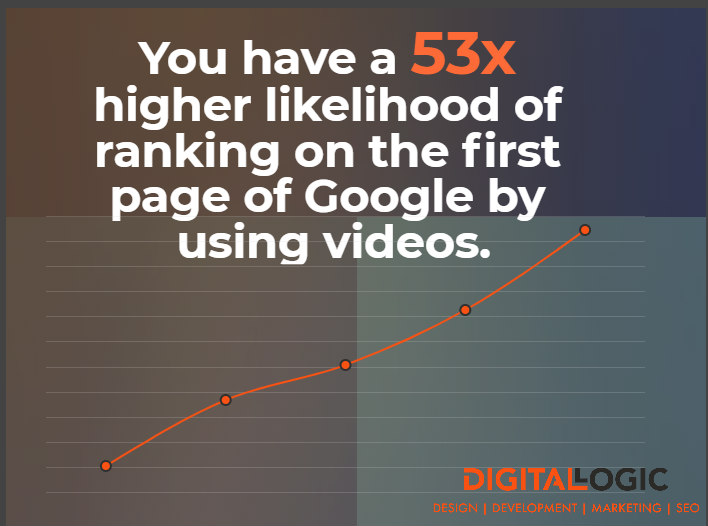
According to a recent study, 81% of households have Tivo or DVR.
Many households are actually pulling the plug with cable or satellite, altogether. According to Pew Research, “The number of “smartphone-only” homes, in which smartphones are the sole source of online access, has climbed to 15% in 2021, up from 8% in 2013.” These cord-cutters are growing rapidly because of the amount of content available via smart TV’s and over the internet.
Let’s look at the targeting options YouTube offers that television does not.
Youtube Ads are More Targeted Than TV Ads
In the past, advertisers purchased traditional television ads based on gross rating point data, which basically measures reach and frequency with respect to the audience.
We find a few issues with this data, though. Such as: Who is the audience? Did they actually watch your ad? Did they do anything after watching your ad? And the biggest and most important, are you wasting your time and money by advertising on television?
Advertising on YouTube gives you targeting options and the ability to leverage the data collected from campaigns.
You can target your YouTube ads by any of the following:
- Demographics
- Remarketing Groups
- Interests
- Topics
- Placements
- Keywords
The more methods you use, the narrower your audience becomes. So, be sure to keep your KPIs (key performance indicators) in mind when choosing your method. For brand awareness, you’ll want to show your video to a wider audience. For maximum conversions, you’ll want to narrow your audience as much as possible.
With YouTube, you can actually set your ads to only show in a very specific location, such as a zip code, or even a mile radius of a selected area. This is not the case with television, as ads will flow into markets and locations you don’t necessarily service.
Age Group Targeting
With YouTube ads, your business can decide to target and bid on very specific age groups. If your audience is males between 25-35 and you only want to serve ads to that age group, then no problem. Targeting by male or female, or by age group, is no problem.
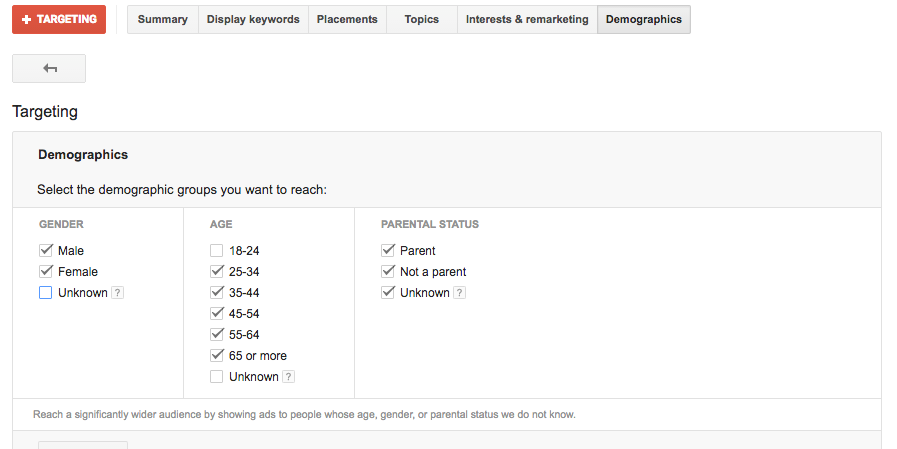
Hyperlocal Geographic Targeting
With YouTube, you can target down to a zip code or a specific radius of a location by using geofencing marketing. With TV, the stations have huge bleed over to markets you don’t always serve. It makes more sense to only target an area you actually want to get customers from.
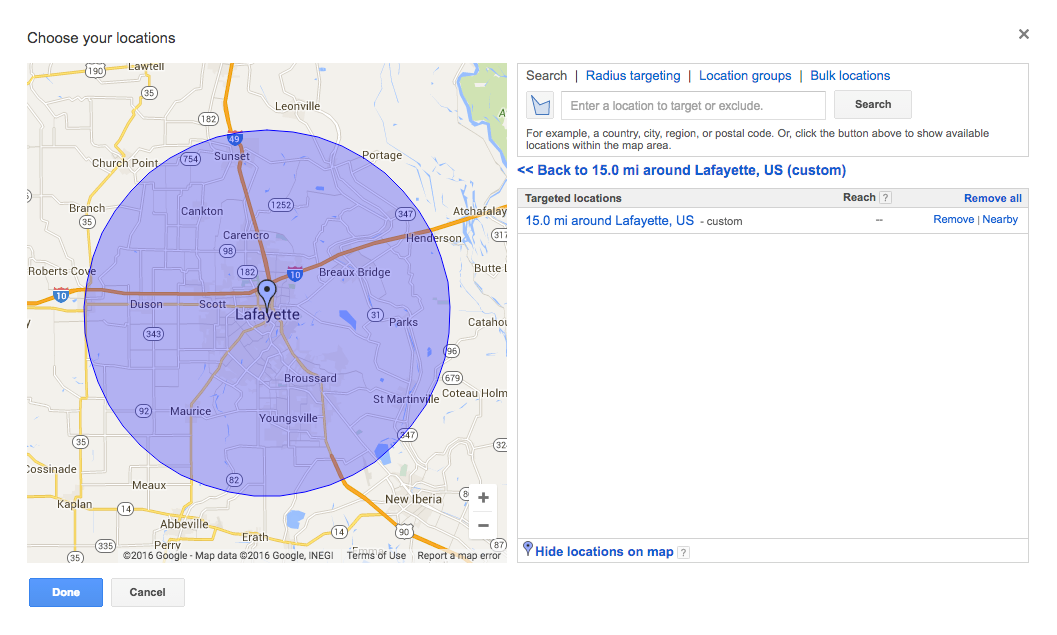
YouTube Ads are Less Expensive than TV Ads
With traditional television advertising, you need a decent chunk to even be considered. With YouTube advertising, you can generally expect to pay around a dollar per view, depending on factors, such as your keywords and target audience.
With YouTube ads, there’s really no minimum investment. You can maximize your investment by employing a digital marketing services agency to further stretch your marketing budget. The more you are able to invest and the more wisely you invest, the better results you will see.
We’ve said a million times, that the internet levels the playing field for small businesses to succeed. YouTube follows suit with this statement, giving small business owners the opportunity to creatively use a minimal budget but still get their business’s name out there. This would never be a possibility for traditional advertising.
Pricing is comparable to TV in some situations, but even if the price is equal to TV, then by having specific demographic and geographic targeting options, it makes more sense to run YouTube campaigns instead of TV when you calculate the CPM.
How Much Do YouTube Ads Cost?
Average CPMs on YouTube (cost per thousand): $17 – $24
Average Cost Per YouTube View: $0.10 – $0.20
YouTube Ads Offer More Formats
Another piece of the YouTube advertising puzzle is the type of ad format you choose. A few forms are:
- Display Ads: These appear at the right of the featured video and above the suggestion list.
- Overlay Ads: These are semi-transparent. They show up on the lower portion of the playing video.
- Skippable Video Ads: These allow the viewer to skip your ad, but only after the first 5 seconds. The ads are inserted either before or during the selected video.
- Non-skippable Ads: These must be watched before you the selected clip may be viewed.
- Bumper Ads: These are also considered “unskippable” and last up to 6 seconds before the video may be viewed.
- Sponsored Cards: These display content that could be relevant to the selected video. A good example of this would be an ad for products featured in the selected video.
YouTube Ads Offer Reporting Metrics
When it comes to reporting, this is where YouTube really stands out from television, with respect to advertisements.
You, as the “marketer”, are able to see exactly which ads are engaging your audience the most, and which ads your target audience is being the most receptive to. This allows you to change the creative if need be, to better engage your already highly-targeted audience.
YouTube analytics are reported in real-time. So, you know what your ads are doing, right then.
If you’re expecting a spike in traffic and aren’t seeing the results you expected to see, you can go into your dashboard, scrap the ads that aren’t performing, and tweak details to ensure your business gets the desired traffic. This is way out of the scope of television’s abilities.
KPI Metrics For YouTube Ads
Some KPI’s you’ll have access to:
- Views: The number of times people watched your video ad
- True Views: The views over 11 seconds
- View Rate: The number of engagements divided by the number of times shown
- Average Cost Per View: The average amount paid when a viewer watches 30 seconds of your video
- Watch Time: The total amount of time your audience watched your video, in seconds
- Clicks: The number of times someone clicks your ad
- Click Through Rate: The number of clicks your ad receives divided by the number of times your ad is shown
- Video Viewership: Also known as “quartile reporting.” Shows how often the video is played down to the quarter percent of its duration
This is only a handful of the key digital marketing metrics for small businesses that you’ll have immediate access to. You’ll be able to find specific custom tables and download different reports.
This way, you’ll have the information that benefits your company the most, and the fastest, at your fingertips.
Another reporting feature, unique to YouTube is the change history log provided. This means you can not only make changes to your account, but you can see how each change made affected your campaign.
As time passes, YouTube actually helps you gain the metrics you desire. Google is constantly updating algorithms and improving knowledge of what viewers will click on next. This puts your ad in more qualified positions as YouTube continues to improve.
For reporting metrics, this is where YouTube Advertising absolutely crushes TV advertising
This is a screenshot of a few small YouTube campaigns. In this reporting screenshot, I only selected the fields that I wanted to see, there are plenty more reporting fields that can be pulled in.
As a digital and creative advertising agency, I want to see what ads the audience is engaging with most and which ones they’re actually receptive to, this helps us change creative and messaging based on what’s working the best. Reports like these help us decide what our audience likes and doesn’t like.
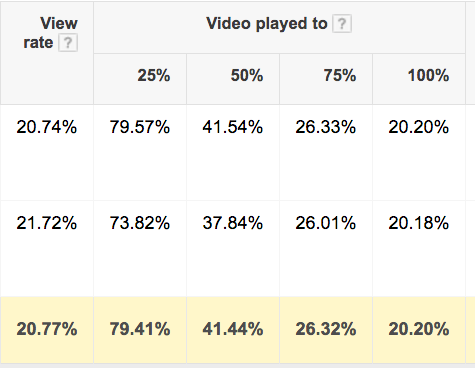
It’s difficult to justify a TV campaign for a local business.
For example, in Shreveport, Louisiana (200K city population), we’ve tested running around $3,000 per day on targeted Youtube pre-roll ads that are typically 15-30 second spots. If we know that we can spend up to $3,000 per day on YouTube ads, that would be $90,000 on YouTube advertising in a small market per month, and there are not many businesses in southern markets that are doing $90K per month on TV buys.
The point is that tracking ability, geo-targeting, and demographic targeting on YouTube are far better than on TV, so I can’t justify a medium like TV unless I’m already at a saturation point with YouTube.
Earned Metrics on YouTube
When running any YouTube ad campaign, or any marketing campaign, for that matter, your primary goal is normally to gain conversions. After a viewer watches your YouTube ad, they may decide to complete other actions, like going to your YouTube channel. When you’re running your ads, it’s important to take note of all the data Google has to offer.
There are five types of earned media metrics when it comes to YouTube Ads:
- Earned Views: The total amount of views after watching your initial ad. These views can either be from the same video or other videos
- Earned Likes: The total amount of likes any of your videos receive from viewers after seeing your ads
- Earned Shares: Total number of times your YouTube viewers share your video
- Earned Subscribers: The total number of users who subscribe to your YouTube channel after seeing your ad
- Earned Playlist Additions: The total number of times your videos were added to another user’s playlist after seeing your ad
Although it is important to get your ad in front of people, it is more important to get your video in front of the right people. Once you are able to collect data on your ad and which ads are engaging the most people, then you can look into adjusting ad spend for the best ad, or you could begin to tinker with the target audience that’s working.
One huge difference between TV ads and YouTube ads is the ease at which your prospects can take action. When you see an ad on TV, or better yet, if you see an ad on TV, you have to use your phone to call or find the company’s website or go to the actual store to take action.
In contrast, if one of your prospects wants to take action on YouTube, all they have to do is click what’s already in front of them. They will then be redirected to your landing page with an explanation of the offer, a form to input their information, and hopefully a sale!
How to Use Earned Metrics
So, how else can you use earned metrics? With professional remarketing services.
If you already have your YouTube channel linked to your Google Ads account, you are able to create several remarketing audiences based on the interactions from your YouTube campaign, both organic and paid.
You can create remarketing audiences off of the earned metrics, as well, for the most part, at least. To do this, you create audiences based on the main components. You can remarket based on things, like video views, video likes, video subscriptions, playlist additions, and shares
So, What About Your TV Campaign?
This generally just depends. It depends on your audience or your target market. If your target audience is 35 or older, it may be wise to continue to spend some of your marketing on television to tie all of your efforts together.
But, even if your audience is over 35, Google still recommends shifting at least 25% of your video budget to YouTube.
YouTube Ads Agency
Like it or not, YouTube is here, and it’s not going anywhere. Years down the road, kids will ask, “Why didn’t people just start their own channel?” or “You had to watch something at a specific time, or you’d miss it?” Not so long ago, we had to read books in order to gain information. Now, it’s readily available, through Google, at our fingertips. A few years from now, kids will be shocked that there was once a time when we could only watch television on television.
If you’re thinking about expanding your marketing efforts, give Digital Logic a call! We’re a Shreveport, Louisiana-based company that works with businesses both on the local and national levels!
Digital Logic is a Shreveport-based company that provides video advertising services for companies, just like yours. We work with both local and national-level businesses. We offer a broad range of services and can’t wait to hear from you!



